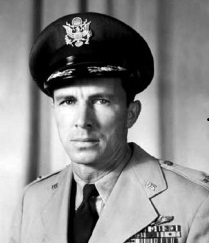Patrick Dawson Fleming, born into a family with a deep military legacy on January 17, 1918, had a passion for aviation from an early age. Taking to the skies during the Second World War, he became the fourth-ranking American naval ace. Continuing to follow his love for flying after the conflict concluded, he later transitioned into the role of a military test pilot. Regrettably, it was in this capacity that he met a tragic end.
Patrick Fleming started his service in the US Navy

Patrick Fleming’s passion for aviation blossomed in his youth, prompting him to take on night shifts at a filling station to fund his flying lessons. In 1935, he made the pivotal decision to join the US Navy, embarking on his service aboard the USS Hull (DD-350), a Farragut-class destroyer. His naval journey continued onboard the USS Saratoga (CV-3), where he was a second-class seaman tasked with repositioning the arresting hooks of aircraft following their landings on the carrier.
Driven by his unwavering commitment to aviation, Fleming enrolled in the Naval Academy Preparatory School, where he and his peers underwent accelerated training in anticipation of the looming war. By early 1941, he’d completed his education. Despite his fervor for aviation, naval traditions dictated a stint of sea duty for new graduates. Consequently, he spent the ensuing two years as a torpedo and catapult officer aboard the light cruiser USS Cincinnati (CL-6).
Flying in the Pacific Theater during World War II

In pursuit of his dream of flying, Patrick Fleming underwent flight training and earned his wings in 1943. March 1944 marked his entry into Fighter Squadron 80 (VF-80), known as the “Vorse’s Vipers,” stationed aboard the USS Ticonderoga (CV-14), where he swiftly demonstrated his prowess as a pilot.
On November 5, 1944, Fleming achieved his first victory by downing a Mitsubishi AGM Zero over the Philippines while piloting a Grumman F6F Hellcat. His success continued and, on December 14 of the same year, VF-80, under his leadership, shot down 19 Zeros and Nakajima Ki-43 Hayabusa “Oscars,” with Fleming credited for four victories. Transitioning to manning Ticonderoga‘s anti-aircraft guns on January 3, 1945, he shot down three more enemy aircraft.
Later, as Bomber Fighter Squadron 80 (VBF-80) separated from VF-80, Fleming assumed the role of executive officer. Leading an attack, he shot down nine enemy aircraft over two days. Remarkably, by February 17, 1945, having flown only six sorties, he’d successfully taken out 19 aircraft – 10 with VF-80 and nine while flying with VBF-80.
Patrick Fleming became a test pilot for the US Army Air Forces

Having demonstrated his value during the Second World War, Patrick Fleming transitioned into a role as a test pilot for the US Army Air Forces (USAAF) Reserve. Elevated to active duty as a lieutenant colonel, he was assigned to the Wright Field Test Pilot School, Class 47. His tenure proved invaluable, as he tested the nation’s first fighter jets, including the Lockheed P-80 Shooting Star and the Republic F-84 Thunderjet.
As the USAAF evolved into the US Air Force, Fleming assumed various responsibilities. He played a role in the operationalization of the Boeing B-47 Stratojet, conducted overflights on the Soviet Union (Project 52 AFR-18), and became an authority on nuclear weapons.
Despite being offered the opportunity to fly the Boeing B-52 Stratofortress, Fleming, having completed 130 flying hours in the preceding 90 days, accepted the role. Tasked with a routine flight, it tragically turned out to be his final one.
Patrick Fleming died in the first ever B-52 Stratofortress crash

The B-52 took off with a crew of eight people at 10:34 AM on February 16, 1956. Around seven hours into the flight, at approximately 38,000 feet, the right forward alternator began to fail. Shortly thereafter, the three other alternators also began to experience issues. This prompted Maj. Edward L. Stefanski, the aircraft’s commander, to lower the landing gear, as the crew compartment began to depressurize.
Reports of a fire having broken out in the lower compartments caused three crew members to eject. At around 8,000 feet, a violent explosion occurred, destroying the bomber. Of the eight crew members on board, four were able to parachute to safety, while three died of injuries resulting from the explosion.
Fleming was able to successfully eject from the B-52 at 22,000 feet, but was badly burned. However, the heat from the blast had melted away the shroud lines in his parachute, causing them to detach from the canopy. When he pulled his ripcord, it never opened. At first, he was reported missing, but his body was later found eight miles from where the bomber had crashed.
More from us: A Brazilian Air Force Pilot Managed to Fly His P-47 Home – With Part of Its Right Wing Missing!
Fleming was only 38 years old when he died. Despite his young age, he’d managed to earn a number of decorations, including the Navy Cross, a Bronze Star, three Silver Stars, four Air Medals and five Distinguished Flying Crosses.
